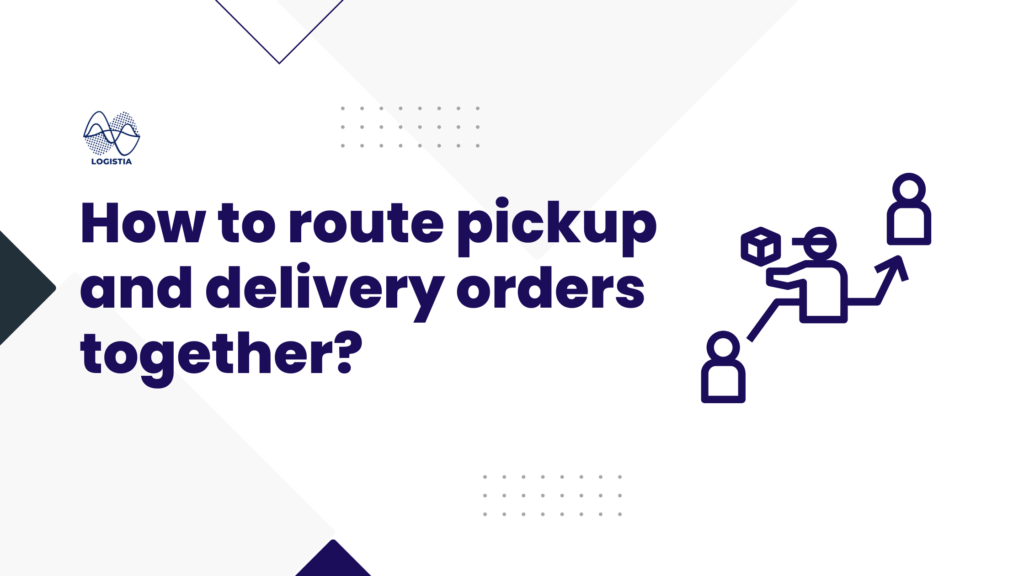How to route pickup and delivery orders together efficiently

To be able to route pickup and delivery orders together efficiently is a big win for any delivery service. It can cut down on travel time and costs, making sure deliveries get to customers faster. This kind of efficiency not only saves money but also boosts customer satisfaction because everyone loves getting their orders on time! Let’s find out how you can manage both pickup and delivery tasks smoothly and efficiently, ensuring that everything runs like clockwork.
The basics of routing logistics
Routing logistics involves managing the journey of delivery vehicles as they pick up and drop off various orders. This process gets complicated when drivers have to handle both pickups and deliveries. The challenge here is coordinating these tasks in a way that avoids backtracking or unnecessary delays. This involves understanding a few key concepts:
- Routing: This is the process of determining the best path a delivery vehicle should take to complete all assigned tasks with minimal time and cost.
- Batching: This refers to grouping nearby delivery or pickup tasks together to reduce travel time and distance.
- Dynamic routing: This is a more advanced form of routing that adjusts routes based on conditions set by the dispatchers
Mastering these aspects of logistics can help streamline operations, making your delivery service more reliable and efficient. A tool with
Benefits of efficient routing
Efficiently managing both pickup and delivery routes together greatly impacts a business’s operational expenses, notably through reducing fuel usage. By adhering to meticulously planned routes, drivers can cover shorter distances and bypass congested traffic areas, thus conserving fuel and cutting costs significantly.
Besides financial savings, this method of route management greatly enhances customer satisfaction. Expedited and reliable service delivery, thanks to optimal routing, ensures that clients receive their orders faster and with more precise timing predictions. This reliability boosts consumer trust and satisfaction, which is critical for fostering loyalty and a strong brand reputation in the highly competitive delivery sector.
Furthermore, optimizing the routing of orders enhances overall productivity. Drivers can complete more deliveries within the same amount of time, thereby optimizing their workday efficiency. This not only benefits the company’s bottom line but also increases job satisfaction among drivers, who can achieve greater accomplishments without additional stress. Investing in efficient routing technologies and strategies proves essential for businesses aiming to expand and succeed in the current economic landscape.
Tools and technologies for efficient routing
It’s important to leverage the right tools and technologies to effectively route pickup and delivery orders together. A robust route planning software plays a critical role in achieving this efficiency.
- Add a stop type: The tool should allow you to specify what kind of order you want to add, a pickup or a delivery, and be visible for drivers to know the information beforehand.
- Automated route optimization: The software should automatically calculate the most efficient routes based on multiple factors like location, priority, and traffic conditions. This feature ensures that drivers take the shortest and fastest routes available.
- Real-time tracking: With GPS tracking, you can monitor vehicles in real-time, allowing for dynamic adjustments to routes as needed. This is crucial for dealing with unexpected road closures or traffic jams.
- Integrated communication: Drivers should be able to receive updates and communicate with dispatchers directly through the app. This keeps everyone on the same page and can help address any issues that arise during the journey.
- Real-time updates: If you need to change anything to the route, the tool should allow you to make them as fast as possible and send the updates to the drivers
Step by step guide to route pickup and delivery orders
Step 1: Collect your data and add it to Logistia Route Planner
Gather all the information needed for effective routing. Include all the pickup and delivery locations, specific timing requirements, contact data of the customers, and any other relevant details. Accurate data is foundational for creating realistic and efficient route plans. Then use any of the 5 methods to add your stops into Logistia Route Planner, which allows you to be specific if a stop is a pickup or a delivery.
Step 2: Optimize the route
After you have added all your stops, optimize the route in Logistia Route Planner. Logistia’s algorithms will ensure pickups are routes before the delivery for the most efficient path. Implementing a route optimization tool, like Logistia Route Planner, helps you batch the stops, and visualize the path, considering multiple factors such as distances, and traffic, time windows, and other constraints.
Step 3: Adjust the routes
Stay adaptable by adjusting your routes in response to any business conditions or other real-time updates like traffic congestion, weather disruptions, or unexpected delays. This flexibility can significantly enhance delivery efficiency and punctuality. With Logistia, you can adapt to any unforeseen situation and make it instantly available to the drivers.
Step 4: Communicate routes to drivers
Ensure all drivers have clear, accurate route and schedule information. Drivers use Logistia Route Planner mobile app to follow the route and deliver all products efficiently. They see the stop list and can capture the proof of delivery to have all the documentation in place.
Conclusion
To conclude, efficiently routing pickup and delivery orders together significantly boosts operational efficiency and customer satisfaction. Adopting advanced route optimization tools like Logistia Route Planner allows businesses to handle deliveries more effectively, ensuring quicker service and reduced costs. By investing in these technologies, companies can streamline their operations and stand out in the competitive delivery service market.